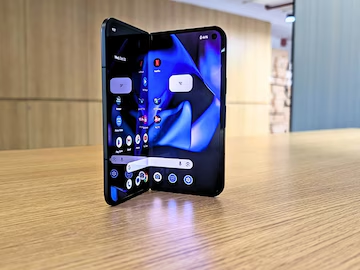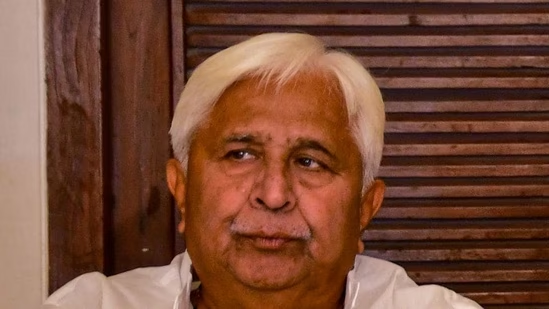In the second year of its foray into foldable technology, Google has demonstrated a heightened commitment to the market. The wider availability of the Pixel 9 Pro Fold in regions like India has raised eyebrows, considering the company’s typically secretive approach to product launches. The unveiling of the entire Pixel 9 series in the country has certainly generated excitement among consumers.
Google’s latest foldable phone, the Pixel 9 Pro Fold, aims to improve upon its predecessor, entering a more competitive foldable market. Priced at Rs 1,72,999 in India, the stakes are high for this upgraded device. Boasting a fresh design and a powerful Tensor G4 chipset, the question remains whether these enhancements are sufficient to captivate potential buyers. Our hands-on experience with the device will provide a conclusive verdict.
Experience a Modern Aesthetic with High-Quality Appeal
Google’s latest foldable gadget has undergone a major transformation in its design approach. Key updates encompass a fresh design concept and a striking camera module at the back. The metallic chassis, together with the reengineered hinge, enhances its robustness. A notable highlight is the seamless closure of the Pixel 9 Pro Fold, ensuring a gap-free finish.
Comparing it to the Samsung Galaxy Fold 6, this device boasts a slightly smaller form factor yet wider dimensions, and notably, it holds the title of being the heaviest foldable on the market, weighing in at 257 grams. While its slim profile may attract users, the practicality of using this foldable varies based on the size of your hands.
While the bezels remain prominent, glaring at the user, this aspect may prove irksome to some individuals, particularly given the steep price tag. Google has certainly excelled in crafting the design of the Pixel 9 Pro Fold; nevertheless, we anticipate further advancements in the succeeding model.
Impact of the Large Presentation
The Pixel 9 Pro Fold boasts vibrant, clear screens that display content with ease. Its external screen spans 6.3 inches and utilizes OLED technology, with the internal 8-inch LTPO OLED panel surpassing Samsung’s size but falling slightly short of Vivo’s foldable screen. While the main display offers an adaptive 120Hz refresh rate, the outer screen is limited to a fixed refresh rate, a drawback for a high-end device.
The Pixel 9 Pro Fold exudes a book-style charm with its attention-grabbing bezels that are hard to overlook. While the size of the 9 Pro Fold may initially seem peculiar, one can gradually acclimate to its dimensions. Engaging with the main screen for movie-watching can become quite addictive, despite the continued prevalence of the dated 16:9 aspect ratio, which remains the favored choice for shows.
Introducing: The Foldable Version of Pixel UI
The user interface on the Pixel 9 Pro Fold, powered by Android, closely resembles the standard UI. While there are useful tools tailored for the foldable device, it seems that competitors have a more refined approach in optimizing their software for this unique form factor.
The user interface could be more intuitive to the device and adapt better to dual-screen functionality for a smoother overall experience. While the controls are easy to grasp and there is a dual-screen mode for opening two apps at once, enhancing the UI’s responsiveness to dual screens would be beneficial. Moreover, the AI features offer an additional dimension of interaction with the foldable device, showcasing a refined implementation in this aspect.
Unraveling the Enigma of Tensors
Upon encountering smartphones such as the iQOO 12 equipped with the Snapdragon 8 Gen 3 processor priced at approximately Rs 50,000, it prompts one to ponder over the justification behind the pricing of the Tensor G4-fueled Pixel 9 lineup. This comparison extends to the Pixel 9 Pro Fold variant, featuring a hefty 16GB RAM, yet hindered by hardware constraints that undermine its functionality and capabilities.
The 256GB storage variant is the sole option available in this region, indicating Google’s expectation for users to rely on its cloud storage to address the potential space constraints. Performance limitations of the Pixel 9 Pro Fold are exposed through benchmark scores, notably during intensive tasks like gaming in high resolution or recording high-definition videos with the camera.
Top Pixel Cameras Not Found
Google has opted for a triple camera setup comprising a 48MP sensor with OIS, a 10MP telephoto lens with OIS, and a 10.5MP ultrawide lens. The image quality produced is decent but falls short of the typical Pixel standards, and falls notably behind the Pixel 9 Pro XL as well.
While the daylight pictures exhibit intricate details and showcase natural colors, there seems to be a discrepancy in the output, particularly when juxtaposed with rival products in the same category.
Where It Counts, Deception Prevails
The battery capacity of the Pixel 9 Pro Fold appears promising for extended usage, but unfortunately, it falls short in delivering long-lasting support.
The Pixel 9 Pro Fold appears to be fairly average in terms of size and packaging, leaving uncertainty about whether it will enhance its performance over time or if this is simply its typical behavior. Moreover, the charging duration of the device does not present any significant advantages, contributing to a lack of appeal for this foldable gadget.
The Pixel 9 Pro Fold showcases Google’s hardware capabilities; however, the high price tag demands a product with enhanced power, finesse, and additional attributes to deliver a complete package.










